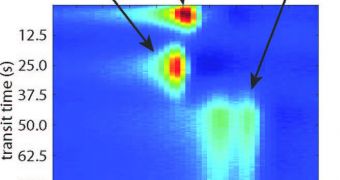A group of investigators at the US Department of Energy (DOE)’s Lawrence Berkeley National Laboratory (Berkeley Lab) announce the development of a new research concept, which could lead to the creation of a portable system for highly sensitive multi-dimensional chemical analysis.
Creating such a system is not a groundbreaking advancement in itself. However, it does become worthy of praise when taking into account the fact that conventional technologies do not allow for building such a device in a practical manner.
In fact, it is nearly impossible, the Berkeley Lab explains. The way scientists here surpassed this obstacle was by combining a unique version of chromatography (lab technique for the separation of mixtures) with award-winning remote-detection version of NMR/MRI technology.
Nuclear magnetic resonance (NMR) and magnetic resonance imaging (MRI) are two technologies that are oftentimes used for chemical and biological analysis. By combining them with chromatography in a unique way, the Berkeley Lab team set the stage for the emergence of mobile analysis devices.
Berkeley Lab Materials Sciences Division (MSD) faculty senior scientist Alexander Pines was the lead author of the research. He is a globally-renowned, leading authority on NMR and MRI technologies.
The expert also holds an appointment as the Glenn T. Seaborg professor of chemistry at the University of California in Berkeley (UCB). With his guidance, the research team created a NMR/MRI technique that can rapidly identify the components of chemical samples.
What's remarkable about this is that the samples are placed inside microfluidic devices, a special class of scientific instruments. These devices are about the size of a computer chip, but contain numerous microscale channels, which can direct fluid in a number of ways.
“We have presented the first demonstration that a monolithic chromatograph column can be used to separate small molecules on a timescale that is compatible with NMR/MRI detection, an important first step to portable chromatographic devices,” scientist Vikram Bajaj explains.
He is a project scientist working with Pines’ group at Berkeley Lab, and also the corresponding author of the new study. The work appears in the latest issue of the esteemed journal Analytical Chemistry.
“The coupling of our remote NMR/MRI technology with monolithic chromatography columns in a microfluidic chip enables us to obtain high resolution, velocity-encoded images of a mobile phase flowing through the stationary phase,” Bajaj adds.
“Our technique provides both real-time peak detection and chemical shift information for small aromatic molecules, and demonstrates the unique power of magnetic resonance, both direct and remote, in studying chromatographic processes,” he concludes.

 14 DAY TRIAL //
14 DAY TRIAL //